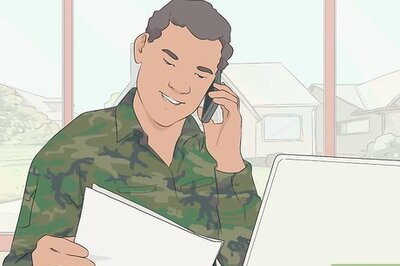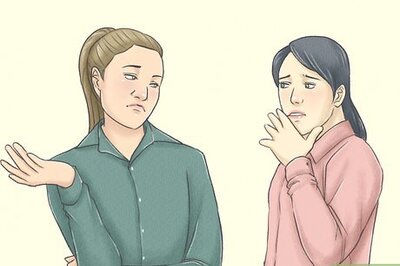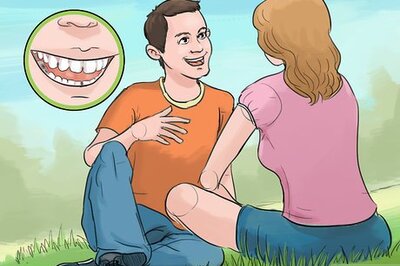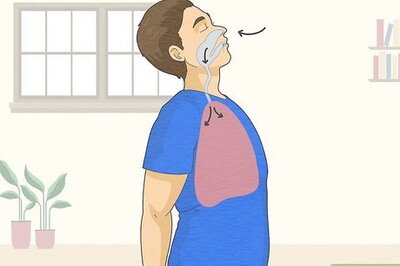
views
The menace of depression continues to consume society increasingly. Increase in stress factors at the workplace, lack of supportive relationships in the family, emotional reactions, and intellectual and ethical dilemmas have all caused this disorder to become widely prevalent.
Depression can take different forms, with its symptoms ranging from mild to moderate. It is a mood disorder, which may be described as feelings of sadness, anger and emptiness. When these feelings continue for a prolonged period, they begin interfering with a person’s everyday activities.
Physical symptoms commonly associated with depression are lack of energy, loss of memory, loss of sleep and appetite, digestion issues, pain in the back, and so on.
Withdrawal from social situations, a disinterestedness in usual activities or routines, changes in sleep pattern and appetite, and bowel disturbances are usually immediate pointers in this direction.
Often, sufferers themselves are not aware that they may be in the grip of depression. It is then for well-wishers to gently nudge them in the direction of Yoga.
Research has shown that Yoga practices, as well as the Yoga way of life, greatly aid dealing with depression.
Here are four Yogic practices that can alleviate depression largely by positively affecting the nervous system. Simultaneously, they also tackle other attendant factors.
Bhujangasana or The Cobra Pose
This is a gem of an asana that helps increase willpower, confidence and inner strength. The successive arching of the vertebrae in the spine enhances its flexibility and stimulates spinal nerves. It tones the muscles supporting the spine, and improves circulation in the spine.
As the chest and abdomen expand, it also deepens breathing, stimulates appetite, and relieves constipation as well as back pain.
The steps: Lie straight, arms at the sides, elbows folded near the waist, palms facing down near the chest. While inhaling, raise your head, neck and chest and look up. Raise the abdomen only up to the navel region. Make sure the body weight does not fall on the hands, that the feet remain together, and the pressure is felt on the lower back.
Stay there, breathing normally for a few seconds. Exhaling, bring down the head, neck and chest to the original position. Rest for a few seconds before the next round.
(Note: Caution is advised for people suffering from high BP, heart ailments, peptic ulcers, hernia and pregnant women.)
Setubandhasana or The Bridge Pose
This ‘inversion’ asana is excellent for depression as it improves blood circulation as well as provides oxygen to the brain and nerves. It stretches the spine and upper body and thus, relieves back pain and strengthens back muscles. It also stimulates internal organs, removes constipation and aids digestion.
The steps: This is done lying on the back. Fold your knees, keep the feet flat on the ground, about one foot apart. Arms lie along the length of the body, palms facing downward. Inhaling, lift up the pelvis, lower back and then middle and upper back; if possible, touch the chin to the chest. All this while, the feet are to be kept pressed on the floor.
The thighs parallel to feet and body raised in the final position gives the appearance of a bridge. Stay in this position for a few seconds, breathing normally. Exhaling, come down to the starting position and relax.
(Note: Those with surgeries of the heart, spine, hip, shoulder, knee and also those who have hypertension or injuries and sprains in the neck and shoulder; spondylitis, hernias and herniated discs may need to avoid it or proceed with caution)
Matsyasana or the Fish pose
This asana promotes a sense of well-being and calmness. It helps the nervous, endocrine and other body systems.
The steps: Sit with legs folded as in Sukhasana, Padmasana or Ardhpadmasana, with spine erect and shoulders relaxed. Gently recline backwards, supporting the body with arms and elbows, to lie flat on the back. Bring the hands under the head from the sides and clasp the opposite elbows. Let hands rest on the mat, under the head.
Maintain this position, breathing rhythmically, for two minutes. Release the posture by slowly unclasping the hands and bringing them back to the sides, and then with their support, gently come back to the starting position.
(Note: People with severe arthritis may need to skip this technique)
Diaphragmatic-Breathing Pranayama
This relaxing Pranayama calms the nervous system. In depression, it is more beneficial if done at the end of an active and preferably, intense, Asana session.
The steps: Sit comfortably or alternatively, lie down on the back, with knees bent and feet placed near the hips. Place one hand on the abdomen, just above the navel. Inhale deeply and let the abdomen expand as the lower part of the lungs gets filled with air. Exhale completely, as the abdomen contracts. Do this deep abdominal breathing 10 times.
Ensure that the breathing is not forced beyond capacity, and it is smooth and not jerky. A thin pillow may be kept under the spine: with this slight propping, the abdomen rises and falls effortlessly, affording full oxygenation. The slight arch also aids in healthy stimulation of spinal column and nerves.
These practices are indicative and should first be learned from a Yoga teacher or Yoga school. Always take into account your capacity and limitations and if in doubt, consult a medical doctor before trying these.
The author is a journalist, cancer survivor and certified yoga teacher. She can be reached at [email protected].




















Comments
0 comment